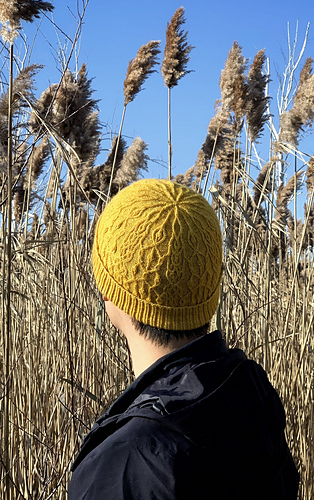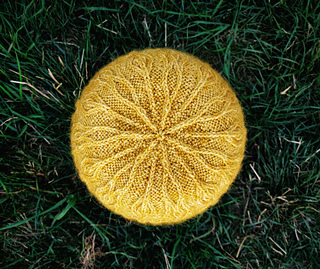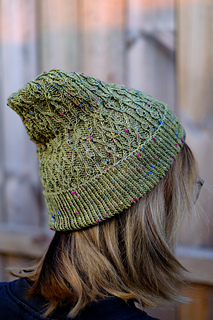patterns >  Darren K. Cheng's Ravelry Store
Darren K. Cheng's Ravelry Store
> Furze Hat








Furze Hat
This pattern is also available online thanks to my friends over at Jungle Craftorium
The Furze Hat is part of the Ulex Set, two accessories inspired by a trip to the Republic of Ireland, and named after Ulex Europaeus (commonly known as gorse, furze, whin, or aiteann gallda). This shrub, a member of the legume family, is native to the British Isles and Western Europe, where it can be seen sweeping the roadsides in pools of bright yellow while in bloom.
Matching Whin Cowl pattern to be released soon!
Experience Level: Intermediate
Sizing
S (M)
To fit head circumference: 44.5-56 (50.75-62.25)cm/ 17.5-22 (20-24.5)”
Finished Measurements
Circumference: 39.5 (45.75)cm/ 15.5 (18)”
Height: 25.5cm/10in with 7.5cm/3” brim
Yarn
A very big thanks to the Fibre Co. for providing yarn support for the Ulex set designs. The samples were knitted in Canopy Fingering (fingering weight; 50% baby alpaca, 30% merino, 20% bamboo; 183m/200 yds per 50g skein) in Mango.
2 skeins of the suggested yarn are required; OR approximately 205 (240)m/225 (260) yds with 7.5cm/3” brim.
Please note: for different brim heights, adjust yardage by approximately 26m/28yds for every 2.5cm/1” of brim added or subtracted. The sample is shown with a 7.5cm/3” brim, but other suggested heights are provided in the written pattern.
Gauge
42 sts x 41 rnds = 10cm/4” in 2x1 twisted rib, blocked, unstretched.
When stretched horizontally, measures approximately 30sts over 10cm/4” (a stretchy gauge ensures a good-fitting hat).
Main pattern repeat width (27sts) = 10cm/2.75”
Needles and Notions
- 2.75mm/US2 needles (or size to obtain gauge) 40cm/16” length + dpns for crown shaping or 101.5cm/40” length with magic loop
- Stitch marker(s): 1 (5 (6) optional)
- Small cable needle or lockable stitch markers
- Tapestry needle
Techniques used
-
Twisted knits and purls
-
Twisted 2-st and 3-st cables
-
Knit and purl decreases
-
Double knit increases/decreases
4386 projects
stashed
4746 times
- First published: November 2020
- Page created: November 29, 2020
- Last updated: May 4, 2021 …
- visits in the last 24 hours
- visitors right now

